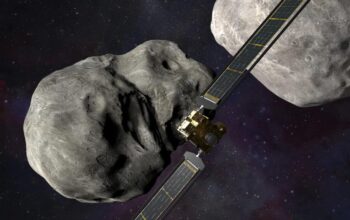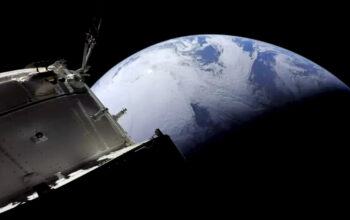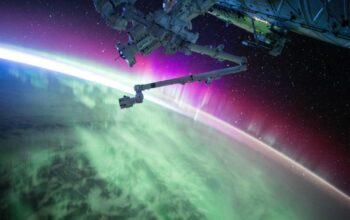Astrobotic Technology’s Peregrine lander was launched on January 8 with the remains and DNA of over 70 deceased individuals on board. The purpose was to deposit the capsules of the participants on the lunar surface as ‘a permanent tribute to the intrepid souls who never stopped reaching for the stars’, according to Celestis, one of the spaceflight companies involved. Among the participants were the remains of famous science-fiction writer Arthur C. Clarke. The Luna Service that Peregrine was carrying starts at $12,995 and is offered by Celestis, allowing family and friends to send their loved ones’ remains to space.
Unfortunately, the mission went off-course and the spacecraft experienced a propulsion problem. The team monitoring the flight decided to re-enter the Earth’s atmosphere in a controlled manner, and Astrobotic stated that NASA and the US government had been consulted before making the decision. The re-entry of the spacecraft took place on Thursday, and Celestis was quick to offer condolences to the families of the participants on board.
The Peregrine was chosen by Celestis for this lunar mission because it caters to lunar activities and is attainable with their Luna Service program. The company also offers an Earth Orbit Service which starts at a lower price of $4,995 and Voyager Service that sees remains launched into deep space, costing $12,995.
Despite its significance, the moon has always been a contentious topic when it comes to religion and history. The Navajo Nation, for whom the moon is sacred, regards placing human remains there as “desecration”. Therefore, when the Navajo Nation became aware of the planned lunar mission with the Peregrine lander, President Buu Nygren issued a statement in December of 2021, requesting a delay in the mission.
Nygren recalled an incident from the 1990s when NASA sent the remains of astronaut Eugene Shoemaker to the moon, causing similar objections from the Navajo Nation. At that time, NASA apologized and pledged to consult with Native Americans.
Despite the objections, Celestis continued with its plans, and now families of participants who paid for the Luna Service have expressed their sorrow via social media. One member of the social media group noted that their loved ones would still be among “the earliest adventurers to leave our lonely planet” even though they did not reach the moon. Celestis and Astrobotic have stated that while unsuccessful, the mission was an important step towards reaching for the stars.

















